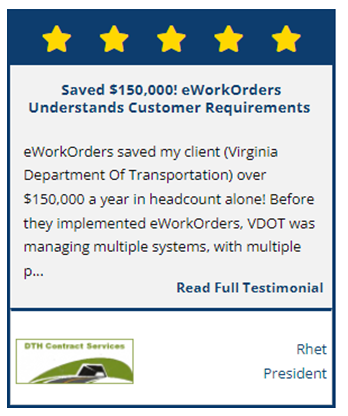 Equipment is a key component of any business, and it must operate at peak performance levels. Regular maintenance is essential for ensuring that equipment functions properly, reducing the chance of unexpected equipment breakdowns, and extending the equipment’s lifespan.
Equipment is a key component of any business, and it must operate at peak performance levels. Regular maintenance is essential for ensuring that equipment functions properly, reducing the chance of unexpected equipment breakdowns, and extending the equipment’s lifespan.
This article will explore the essentials of best practice equipment maintenance, including the objectives, key functions, and benefits of a strong maintenance program.
What is Equipment Maintenance?
The primary objective of equipment maintenance is to optimize equipment performance, reduce downtime, extend equipment lifespan, and reduce maintenance costs. This covers everything from corrective repairs to preventive maintenance and inspections. Maintenance managers strive to keep all equipment in good working order (from construction equipment to production machines and everything in between) through regular care and maintenance. Businesses can reduce the likelihood of costly equipment breakdowns by proactively maintaining their equipment. Which in turn, can lead to enhanced production efficiency, decreased operating costs, and increased equipment durability.

Types of Equipment Maintenance
Preventive Maintenance: Maintenance activities that are scheduled on a regular basis with the goal of preventing equipment breakdowns and extending equipment life. The purpose is to keep equipment in good working condition and to reduce the possibility of unexpected breakdowns.
Scheduled Maintenance: Maintenance activities are performed on a specified schedule regardless of the actual condition of the equipment. Maintenance actions are carried out at predetermined intervals, regardless of whether the equipment is displaying signs of wear or failure. An example would be inspections.
Corrective Maintenance: Maintenance activities carried out as a result of equipment failures or breakdowns. The goal is to get the equipment back up and running as soon as possible.
Predictive Maintenance: The use of data analysis and monitoring to predict when maintenance will be needed and perform maintenance before equipment fails.
Condition-Based Maintenance: Maintenance activities that are performed based on the actual condition of the equipment, rather than on a set schedule.
Emergency or Breakdown Maintenance: Maintenance that is performed only when equipment fails, without any prior planning or preventative measures.
Implement Best Practices for Equipment Maintenance
When developing a maintenance plan, businesses are prone to focusing on large breakdown issues while ignoring minor problems. This isn’t a great long strategy. Even minor problems can lead to production errors, asset damage, and workplace injuries if not resolved in time.
Below are a few easy steps to help you create a proactive maintenance routine:
Establish A Team
Establish an appropriate maintenance team. Recruit maintenance managers, technicians, and relevant operational personnel. Then, outline the objectives you want your team to attain. These might include minimizing corrective repair costs and reducing downtime of the equipment.
Choose A System To Support Your Maintenance Plan
Routine maintenance can be tracked, managed, and scheduled in a variety of ways, including with paper and pencil, excel sheets, whiteboards, or a computerized maintenance management system (CMMS). Each method has advantages and disadvantages, and the method to choose depends on factors such as the size of the maintenance operation, the level of detail required, and the resources available. The paper and pencil method is the simplest, although it is time-consuming and prone to errors. Excel sheets provide a more complex way to track maintenance, but they can be difficult to update and manage. Whiteboards are beneficial for visualizing maintenance schedules, but they do not give a comprehensive means to track maintenance tasks CMMS, on the other hand, offers a comprehensive solution for tracking, managing, and scheduling routine maintenance, making it the preferred choice for many organizations. The software might seem costly as it needs some upfront investment involving subscription fees, but it comes along with many benefits.
Asset Inventory
It is essential to document your assets. To know how many assets require maintenance, you must have an accurate asset count. Include asset details such as make/model, manufacturer ID, asset specification, and location.
Develop Maintenance Procedures
Once you have a reliable inventory list, you must decide how often you should service the assets. Depending on the item type, this can be done weekly, monthly, quarterly, or semi-annually. You must also define the repair procedures, including standard operating and repair guidelines or safety measures. Finally, make a list of the tools you’ll need for internal or outsourced maintenance. You can get a good understanding of how often to perform preventive maintenance on your equipment based on OEM recommendations and your equipment’s maintenance history.
Prioritize And Categorize Maintenance Tasks
To ensure a smooth daily operation, repair tasks should be prioritized as high, medium, or low. Service sessions can take a lot of time so you need to choose your battles wisely. Begin with high-value equipment and begin scheduling maintenance tasks with longer intervals first (annual then bi-annual) as they take up the most time and resources. You can then concentrate on lower-priority tasks that take less effort.
Maintenance Checklists
Maintenance checklists play a crucial role in ensuring the proper functioning of equipment, facilities, and systems They provide a systematic approach to routine maintenance and help in the completion of all tasks in a timely and efficient manner. Maintenance employees can use a checklist to ensure that all system components are inspected, tested, and maintained in accordance with manufacturer specifications and industry standards. This can help to prevent equipment failures, increase the life of the equipment, and reduce the possibility of expensive repairs. Checklists are also useful for documenting and tracking maintenance tasks, making it easier to notice patterns, identify potential problems, and plan for future maintenance work. Checklists are an important aspect of any maintenance program.
Train Your Team
Creating and executing a maintenance system is a time-consuming procedure, and proper adoption of the program is key! Companies should develop training programs to ensure that their team knows exactly how to implement repair methods among different divisions in order to maximize their management approach. Thoroughly train your employees on how to utilize the system you’ve chosen to track your maintenance. They should understand how to submit a request, resolve it, and track any difficulties that arise throughout the process. Additionally, ensure that technicians understand how to service the equipment.
To enhance the effectiveness of your maintenance team, consider collaborating with recruiting agencies that specialize in technical talent. These agencies can leverage their expertise and networks to efficiently match skilled candidates with your specific maintenance needs. Many agencies utilize advanced tools like Recruiting CRM software to streamline the hiring process, ensuring a seamless experience for both employers and job seekers. This approach not only enhances communication throughout the recruitment process but also allows for better tracking of candidate progress, ultimately helping you build a highly qualified maintenance team that can quickly adapt to your specific systems and procedures.
Asset Assessment
Businesses and their assets evolve over time. Because of this ongoing transition, it is important to assess progress in order to plan for future growth. You may note that some equipment is checked in for maintenance more frequently than others. This can be problematic if the item’s repair and replacement costs surpass its real value. To deal with such events, evaluate your maintenance plan at regular intervals and make any necessary changes.
Benefits of a Strong Equipment Maintenance Program
A strong equipment maintenance program can provide businesses with a range of benefits, including:
Improved equipment performance: Regular maintenance helps to optimize equipment performance, ensuring that equipment runs smoothly and reduces the risk of equipment breakdowns.
Reduced equipment downtime: By proactively maintaining equipment, businesses can reduce the risk of unexpected equipment breakdowns, leading to reduced equipment downtime.
Increased equipment lifespan: Regular maintenance helps to extend the lifespan of equipment, reducing the need for costly replacements.
Improved resource management: A strong equipment maintenance program can help businesses manage their maintenance resources, such as labor, parts, and tools, reducing costs and improving resource utilization.
Increased accountability: A strong equipment maintenance program can increase accountability and help businesses maintain high standards of equipment maintenance.
Final Thoughts
Maximizing equipment performance is critical to the success of any organization. Effective equipment maintenance, combined with the right tools and technologies, can help organizations in achieving this goal. Companies can expedite maintenance procedures, automate jobs, and make informed decisions regarding maintenance activities by employing a computerized maintenance management system (CMMS) and other equipment maintenance solutions. This results in increased equipment reliability decreased downtime and increased safety. Regular equipment inspections and preventive maintenance, as facilitated by a CMMS and other maintenance tools, help to identify potential problems before they become critical, thereby reducing the need for unplanned repairs and maintenance. Ultimately, maximizing equipment performance leads to improved productivity, lower maintenance costs, and a more successful organization.
Other Resouces
Maintenance Glossary of Terms and Definitions
8 Preventive Maintenance Mistakes That You Should Not Ignore
Maximizing Efficiency & Profit Through Spare Parts Inventory Management: The Top 10 Benefits
Preventive Maintenance Checklists – Important Tasks You Need To Include